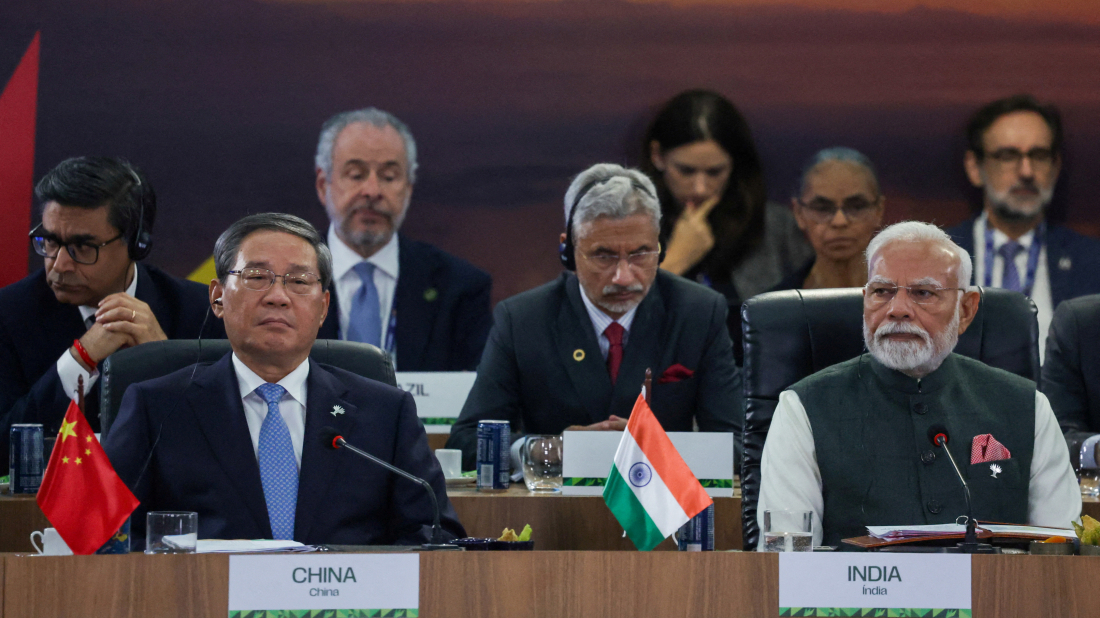Doha Forum: Azerbaijan and Armenia discuss regional peace
At the Doha Forum, Assistant of the President of the Republic of Azerbaijan Hikmat Hajiyev and Secretary of the Armenian Security Council Armen Grigor...

India and China have resumed direct commercial flights for the first time in five years, marking a cautious thaw in relations between the two Asian giants.
The new development comes after years of diplomatic and military tensions peaking in the year 2020.
The move signals a gradual normalisation of exchanges as both nations seek to stabilise ties amid shifting global trade dynamics and rising friction with the United States.
The first flight between New Delhi and Shanghai took off on Sunday, operated by Air India, with Chinese carriers expected to follow in the coming weeks.
The resumption ends a suspension that began in 2020, when both sides halted direct routes amid the COVID-19 pandemic and a sharp deterioration in bilateral relations following deadly border clashes in the Galwan Valley.
The freeze in direct air links had become a symbol of the deep chill in China-India relations, which extended beyond the battlefield to trade and diplomatic engagement.
Officials in New Delhi described the decision as a “measured step” toward restoring normal travel and business exchanges, emphasising that the move does not signal the resolution of all outstanding issues but reflects a willingness to re-engage.
Beijing’s foreign ministry also welcomed the restart, calling it “a positive development that serves the interests of both peoples and economies.”
The renewed air connectivity comes at a time when India’s relations with the United States, one of its key strategic and trade partners, have faced fresh strains.
U.S. President Donald Trump recently announced sweeping 50 per cent tariffs on a range of Indian exports, including steel, pharmaceuticals, and textiles, citing trade imbalances and market access concerns.
The unexpected move has prompted New Delhi to diversify its partnerships, with analysts suggesting that warming ties with Beijing may offer both economic relief and geopolitical balance.
Before the suspension, India and China had multiple direct flights linking major cities such as Delhi, Mumbai, Beijing, and Guangzhou, facilitating business travel and tourism.
The restoration is expected to benefit airlines, traders, and students, many of whom have faced years of limited connectivity and cumbersome transit routes through third countries.
Despite the progress, both governments remain cautious. Border tensions in the Himalayas persist, and India continues to restrict Chinese investment in sensitive sectors such as telecommunications and infrastructure.
However, trade between the two countries has continued to grow, with China remaining one of India’s largest suppliers of electronics, machinery, and raw materials.
Analysts view the resumption of flights as part of a trend toward pragmatic engagement.
With global economic uncertainty rising and supply chains shifting, both Beijing and New Delhi appear to recognise the need to manage their rivalry while pursuing shared interests.
The skies reopening between the two nations, though largely symbolic, may mark the first step in a slow and deliberate process of rebuilding trust after years of turbulence.
The 2026 FIFA World Cup draw at the Kennedy Center in Washington, D.C., has finalized the group stage for the tournament co-hosted by the U.S., Canada, and Mexico, setting the schedule and matchups for next summer’s expanded 48-team event.
FIFA releases the 2026 World Cup schedule with match dates, venues, and key fixtures. See when host nations USA, Mexico, and Canada play and get an overview of group stage and knockout rounds.
A group of soldiers has appeared on Benin’s state TV announcing the dissolution of the government in an apparent coup, the latest of many in West Africa.
Pakistan and Afghanistan exchanged heavy fire along their shared border late on Friday, a reminder of how sensitive the frontier remains despite ongoing diplomatic efforts.
Iran’s Foreign Ministry has strongly condemned the Gulf Cooperation Council (GCC) for its support of the claims by United Arab Emirates on three Iranian islands.
Residents in Aceh Tamiang, Indonesia, are facing rising diseases and limited medical care after cyclone-driven floods and landslides destroyed homes and infrastructure.
A group of soldiers has appeared on Benin’s state TV announcing the dissolution of the government in an apparent coup, the latest of many in West Africa.
Lava fountains shot from Hawaii’s Kīlauea volcano from dawn to dusk on Saturday, with new footage showing intensifying activity at the north vent.
Japan said on Sunday that Chinese fighter jets directed fire control radar at Japanese military aircraft in two incidents near the Okinawa islands, calling the moves dangerous. China denied the allegation.
Indian authorities have ordered a magisterial inquiry and promised financial support after a fire tore through the Birch by Romeo Lane nightclub in Arpora, Goa, killing 25 people.
You can download the AnewZ application from Play Store and the App Store.

What is your opinion on this topic?
Leave the first comment